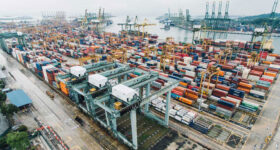Greater access to trade finance could speed the global economic recovery— if more stringent bank regulation doesn’t get in the way. The financial crisis of 2007-08 was a severe blow to global trade, as insolvencies, collapsing financial institutions, and constricted credit markets took their toll. Many European banks in particular stopped providing trade financing, while trade credit insurers absorbed high volumes of claims and retrenched their activities.
Since then, the market has recovered considerable ground, and trade finance products such as letters of credit, bank guarantees, and bill collection and discounting are still considered some of the safest, most strongly collateralized forms of finance. Indeed, trade finance remains a systemically critical area: The Asian Development Bank (ADB) calculates that a 15% increase in access to trade finance would increase production by 22%, for example. With global trade generating some $15 trillion a year in transaction volume, only a fraction of which is bank-funded, trade finance is also potentially one of the biggest asset classes in the world. figure 1 But there is still concern among banks and corporations that rely heavily on exports to emerging markets regarding whether trade finance can play its full part in boosting global trade—especially for small to medium-sized enterprises (SMEs) selling into developing markets.
Despite the near global recognition of SMEs as engines of growth and economic value creation, some international banks, still recovering from the financial crisis, have either withdrawn or curtailed financing and risk mitigation activities in this segment of the market. The ADB last year estimated a global trade finance gap of $1.9 trillion—up from $1 trillion at the low point of the global financial crisis in 2009—of which $1.1 trillion is in developing Asia.1 Overcoming this gap may be critical to achieving full worldwide economic recovery, says Krishnan Ramadurai, senior technical advisor to the International Chamber of Commerce (ICC) Banking Commission, given that the growth of global trade has lagged global GDP growth since 2011. What factors keep the trade finance gap from closing? The ICC singles out three:
- Differences in the way the new rules and regulations are interpreted and applied in diverse geographical markets make it challenging for banks to extend finance, despite recognition within the new rules that trade finance is different from other asset classes.
- Standards for risk tolerance lack clarity.
- Trade is not recognized as a unique asset class that serves to help SMEs access finance.
Together, these developments are affecting provision of trade finance to companies, placing a new emphasis on managing risk.
You can read the complete article by Harvard Business Review Sponsored by AIG on their website here: Trading By the Rules










